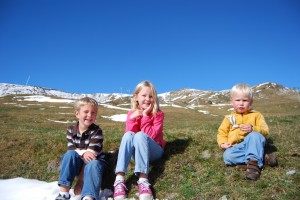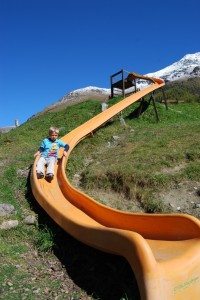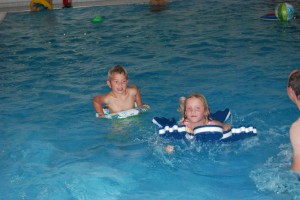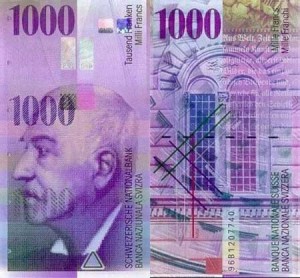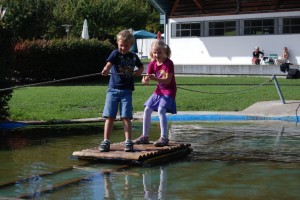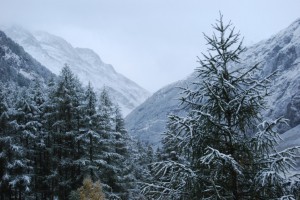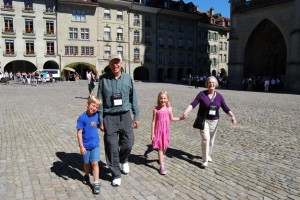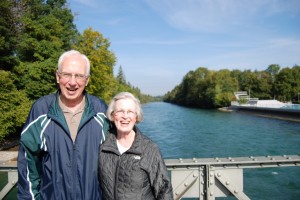On Saturday, we went to Herbstmesse, a two-week long Fall festival that takes place in Basel, Switzerland. We had been invited by the Brumanns, the parents of Isabel, a Swiss teaching intern we hosted in the US in 2009-10. We started the day early, since it takes about an hour and a half to get to Basel from our house by train. Herr Brumann picked us up at the train 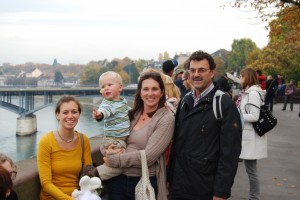 station and brought us to their apartment, where we reunited with Isabel and the rest of the family. Since her parents don’t speak much English, all of the conversations took place in German, and Joe and I were very proud of how well we were able to carry on.
station and brought us to their apartment, where we reunited with Isabel and the rest of the family. Since her parents don’t speak much English, all of the conversations took place in German, and Joe and I were very proud of how well we were able to carry on.
After a hearty, Swiss-style lunch around the kitchen table and a little nap time for Henry, we headed into the city for Herbstmesse. We feel like we have a really good grasp on 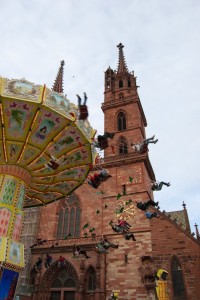 what a European festival is like now. This one had the same rides, and booths selling a lot of the same things — and some decidedly Swiss things. But Herbstmesse is spread out right in the center of the city of Basel. There are several main areas in the major city squares including Barfuesserplatz and Muensterplatz. We rode the ferris wheel and other rides, ate some lebkuchen (anise flavored gingerbread) and wienerli, and checked out the view over the Rhine river. By around 6:45pm, Henry was already yawning, and we still had a long journey home. The Brumanns led us through one more platz to the tram stop.
what a European festival is like now. This one had the same rides, and booths selling a lot of the same things — and some decidedly Swiss things. But Herbstmesse is spread out right in the center of the city of Basel. There are several main areas in the major city squares including Barfuesserplatz and Muensterplatz. We rode the ferris wheel and other rides, ate some lebkuchen (anise flavored gingerbread) and wienerli, and checked out the view over the Rhine river. By around 6:45pm, Henry was already yawning, and we still had a long journey home. The Brumanns led us through one more platz to the tram stop.
Coming from the Midwest, we are accustomed to infamously long goodbyes. We are used to announcing our departure, and then continuing to talk for up to an hour before actually making it out the door. But the Swiss goodbye is a whole new level. If they aren’t ready for you to go, they simply don’t acknowledge your goodbyes or hints that your children are already up past their bedtime. This has happened to us twice now — the only two times we have been invited to Swiss homes in the evening.
In any case, when the tram stopped at the train station and we started to stand up, they simply looked at us and said, “But you must come back to our apartment for dinner.” So, we obediently sat back down and looked at each other helplessly. At this point, they told us that it was daylight savings, so we had an extra hour anyway. (If they hadn’t told us, we probably would have missed it completely, and showed up at school/work an hour early on Monday.)
 Fortunately, since lunch is the primary meal in Switzerland, dinner is fairly simple. By 8:00, we were sitting down to fresh bread, cold cuts, an assortment of cheeses, and yogurt. After checking the schedule, it was determined that we would catch the 9:30 train. Don’t get me wrong, the Brumann’s were wonderfully gracious hosts. But, by 9:00pm my brain hurt from over 10 hours of German language conversation. The kids were strung out. But it was all out of our control. Suddenly, at 9:15, it was like the goodbye gods gave signal, and Bam! we were out the door with kisses on the cheeks and on our way to the train station.
Fortunately, since lunch is the primary meal in Switzerland, dinner is fairly simple. By 8:00, we were sitting down to fresh bread, cold cuts, an assortment of cheeses, and yogurt. After checking the schedule, it was determined that we would catch the 9:30 train. Don’t get me wrong, the Brumann’s were wonderfully gracious hosts. But, by 9:00pm my brain hurt from over 10 hours of German language conversation. The kids were strung out. But it was all out of our control. Suddenly, at 9:15, it was like the goodbye gods gave signal, and Bam! we were out the door with kisses on the cheeks and on our way to the train station.
Now, I’ve judged other parents I’ve seen with young kids out late at night. But, this time it was me. When we were changing trains in Bern at 10:30pm, several people gave us a look that I recognized. And we wouldn’t be home until 11pm. Somehow, knowing it was an hour earlier with the time change wasn’t all that comforting.

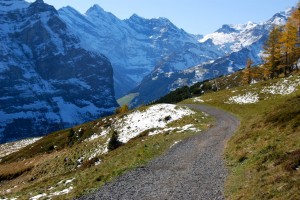
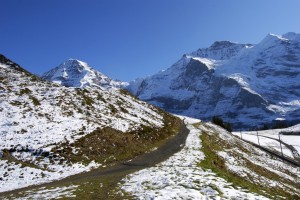
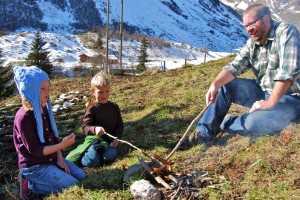
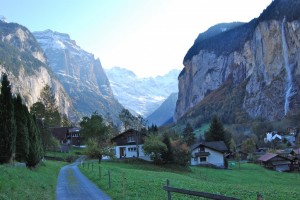
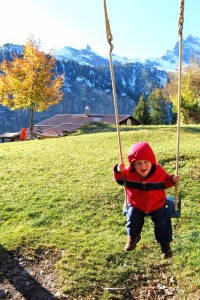 We feel so blessed to be living just a couple of hours from such a paradise. The weekend was so clear and beautiful, we never saw a cloud in the sky. One of my favorite moments was sitting outside in Gimmelwald after putting the kids to bed and looking up at the stars. It’s been a long time since I’ve seen that many stars in the sky. It was just one of the many memorable moments in a magical weekend.But I’ll let him tell you about that himself…
We feel so blessed to be living just a couple of hours from such a paradise. The weekend was so clear and beautiful, we never saw a cloud in the sky. One of my favorite moments was sitting outside in Gimmelwald after putting the kids to bed and looking up at the stars. It’s been a long time since I’ve seen that many stars in the sky. It was just one of the many memorable moments in a magical weekend.But I’ll let him tell you about that himself…